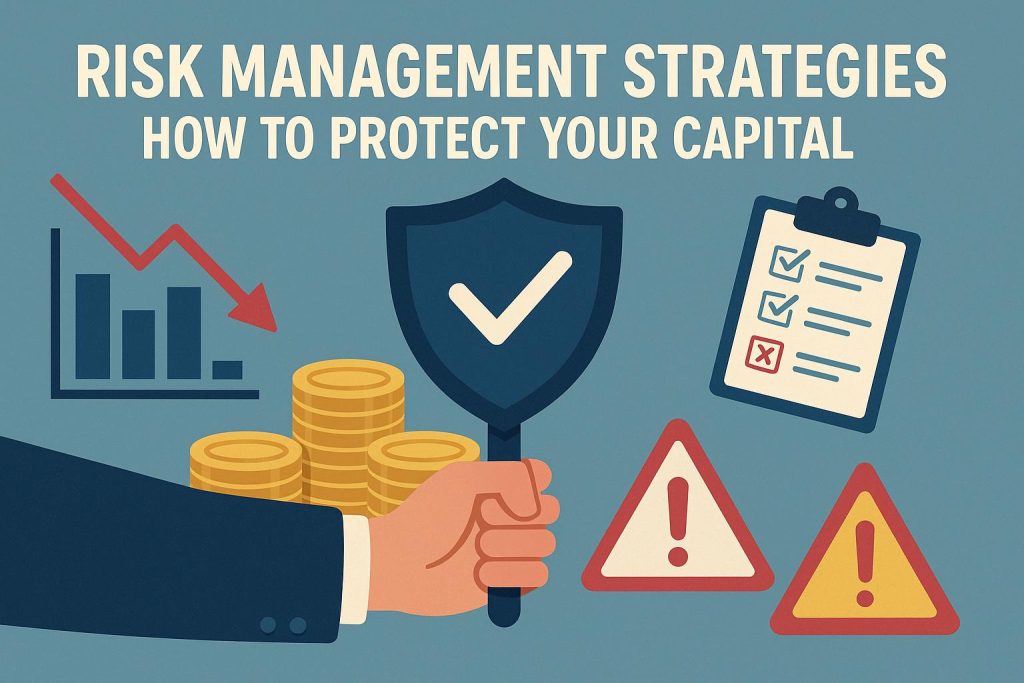
Risk Management Strategies: How to Protect Your Capital
Written on October 9, 2025 By admin in Uncategorized
Understanding Risk Management
In the realm of finance and investing, risk management plays a pivotal role in safeguarding your capital. It is a comprehensive process involving the identification, assessment, and prioritization of risks. This is subsequently followed by coordinated efforts to minimize, control, and continuously monitor the probability or impact of the identified risks.
Importance of Risk Management
Risk management stands at the core of protecting an investment portfolio while ensuring sustained financial stability over the long term. By adopting well-structured strategies, investors can effectively counter potential losses and make sound, informed decisions regarding their investments. A key advantage of proper risk management is the ability to take calculated risks, balancing the potential rewards against the concomitant dangers.
When investors implement risk management strategies, they are essentially crafting a safety net that allows them to venture into opportunities knowing that potential pitfalls have been addressed. This protective framework enables the pursuit of greater returns while maintaining a prudent approach to financial threats.
Common Risks in Capital Investment
Investing inherently involves facing various types of risks that can significantly influence the value of your capital. These risks include:
1. Market Risk: This constitutes the danger of investments losing value due to broader economic changes or events that adversely affect the entire market landscape. Market risk is often unavoidable but can be mitigated through diversification and strategic asset allocation.
2. Credit Risk: Credit risk emerges when a borrower is unable to meet their repayment obligations, resulting in financial loss for the lender. This risk highlights the importance of creditworthiness assessments and the selection of well-evaluated investment vehicles.
3. Liquidity Risk: A liquidity risk arises when an investor finds it challenging to quickly exit an investment or convert it into cash without incurring substantial value loss. This risk emphasizes the necessity for maintaining liquid assets within a portfolio to manage unexpected cash flow requirements.
4. Operational Risk: Stemming from inadequate or failed internal processes, human errors, or system failures, operational risk underscores the importance of robust internal controls and business continuity plans. Identifying vulnerabilities in operations can prevent significant disruptions.
Strategies to Protect Your Capital
Implementing effective risk management strategies is essential for securing your invested capital from unforeseen market shifts and financial threats. Here are some key techniques:
Diversification
Diversification is a cornerstone of risk management that involves dispersing investments across various asset classes, sectors, and geographies. By employing diversification, investors can limit the impact of any single underperforming investment on the entire portfolio. This strategy ensures that gains in one segment can counterbalance losses in another, fostering a more resilient investment structure.
Asset Allocation
Asset allocation entails distributing investments among diverse asset categories such as stocks, bonds, real estate, and cash equivalents. This strategic distribution aligns with individual risk tolerance, investment horizon, and financial goals. By reducing concentrated exposure, asset allocation helps smooth out potential volatility associated with any single asset’s fluctuations.
Regular Portfolio Rebalancing
Portfolio rebalancing is a systematic process of adjusting investment holdings to adhere to a predefined asset allocation strategy. Over time, certain investments may perform better than others, leading to shifts in the portfolio balance. By periodically rebalancing, investors can ensure their portfolio retains its intended structure, thereby maintaining alignment with their risk management schema.
Use of Stop-Loss Orders
Stop-loss orders serve as a practical tool to curtail extensive losses in investments. By setting a specific price threshold for selling an asset, investors can protect their capital from significant downturns. This mechanism automatically triggers a sale when the price dips to the set undesired level, providing an effective shield against steep declines.
Hedging
Hedging is a strategic approach that utilizes financial instruments like options and futures to offset potential losses in an investment. By engaging in hedging, investors can create positions that appreciate in value if other investments depreciate, thereby creating a buffer against adverse market movements and safeguarding their capital.
Invest in Bonds
Bonds are generally perceived as safer investments when compared to stocks, offering a consistent income stream and reducing the overall volatility of a portfolio. Incorporating bonds into an investment strategy serves as a counterbalance to the risks associated with the stock market’s inherent fluctuations.
Emergency Fund
An emergency fund is a fundamental component of financial planning, providing a reservoir of liquidity for unforeseen circumstances. This readily accessible cash reserve allows you to cover unexpected expenses without having to liquidate investments at a potential loss. Ensuring an appropriate emergency fund is in place fosters stability and offers peace of mind during financial emergencies.
For those seeking deeper insights into risk management strategies, consulting reputable financial resources and platforms is advisable. Professional advisories and educational content can offer additional tools and information, enhancing your ability to protect your capital and accomplish long-term financial objectives. By integrating these practices into your financial strategy, you can navigate the complexities of investing with greater confidence and security.
This article was last updated on: October 9, 2025